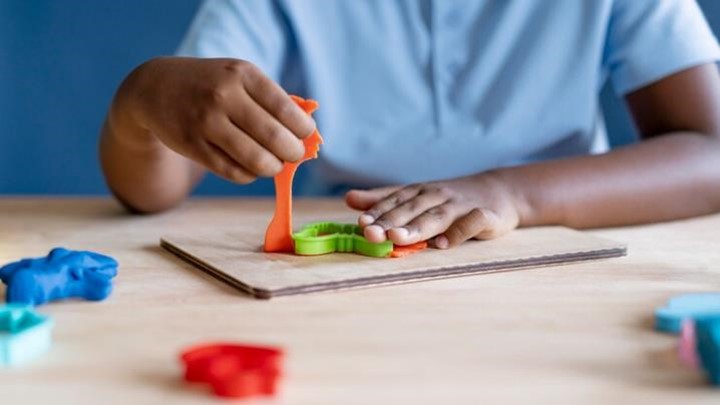In the past few years, project-based learning (PBL) has become a popular and successful method of teaching. It encourages students to solve real-life problems and engage in various projects that demand critical thinking, creativity, and cooperation.
This learning approach helps develop problem-solving, and communication skills as well as teamwork abilities among students. This will be necessary for their future professions or undertakings.
The objective of this article is to discuss step by step what project-based teachings comprise according to my own understanding thus giving teachers a complete overview on how they can introduce PBL within their classrooms.
What is project-based learning?
Project-based learning (PBL) is a method of education where students learn by actively engaging in real-world and personally meaningful projects. In this approach, learners undertake a project that seeks to address complex issues or solve problems over an extended period often working together. Rather than the typical teacher-centered instruction method.
PBL requires students to become active participants in their education through deep investigation into a subject matter, finding information out for themselves from various sources; analyzing data critically; solving problems logically and creatively using resources available both inside and outside the school setting while coming up with something tangible like products or presentations that reflect what they have learned.
7 Steps of Project-Based Learning
Step 1: Define the Problem or Inquiry
The first stage of PBL is defining the problem or question to be investigated by students. This step is vital because it determines everything else about the project. Teachers should help learners come up with a real-life problem or issue that aligns with the curriculum and arouses their curiosity. The problem or inquiry should be open-ended such that students can look at it from different angles and provide various solutions.
Step 2: Research and Data Collection
Students can carry out research and gather information related to the problem or question during this phase. It helps them develop their thinking skills as well as improving on how they conduct investigations. Teachers may guide pupils on finding credible sources, note-taking methods, and organizing data among others thins. It can also help them to identify biases, evaluate sources’ credibility, and cite them correctly.
Step 3: Develop a Proposal and Plan
In this step, learners should create a plan and a proposal for their project. This process aids in the development of critical thinking skills among students as they solve problems. They should identify potential hurdles, outline their approach, and set deadlines for themselves. Teachers must help them to come up with clear, concise proposals and plans.
Step 4: Implement the Plan and Create a Product
This is where learners put into action what they have planned for by making something tangible. The most important thing about this stage is fostering creativity as well as problem-solving abilities in individuals. Therefore, learners need to work together towards producing products that address issues or answer questions. Teachers are expected to give necessary advice and support but also allow students to be responsible for their own tasks.
Step 5: Think back and assess
During step five, students think back to the project and evaluate their performance. This part is useful for developing student’s ability to analyze things critically and self-judge them. They should review what they did well at, what went wrong, as well as where improvements were made and not made. Moreover, they need to consider its strengths or weaknesses which can be done by appraising the final product.
Step 6: Demonstrate & Share
At this stage, students demonstrate their project to other people. Through such a sharing process, learners can become better communicators while also enhancing presentation skills. It is expected that they will present before classmates but teachers or even experts from outside may attend too. Additionally, through this event, students gain confidence in showcasing what they have done besides receiving constructive criticism from the audience.
Step 7: Celebrate and Showcase
The last stage of the project is celebrating and showcasing. This phase is meant to build student’s pride in themselves and their work. Avenues need to be created by teachers through which students can display what they have done; this may include things like exhibitions, presentations, or even online platforms thereby enabling them to share their works with greater numbers while at the same time fostering a sense of belonging among them.
Benefits of Project-Based Learning for Teachers
- Deeper Learning: Project-based learning induces a much deeper understanding of subjects or concepts among learners. This means that they can go beyond the mere surface level and get to know more about what they are being taught.
- Develops Critical Skills: Critical thinking, creativity, collaboration, and problem-solving; these critical abilities can be nurtured via projects. In college or career life, one cannot succeed without such skills hence making them very important.
- Real-World Application: It is one thing to learn and another to implement. Adopting project-based teaching methods ensures that students not only gain knowledge but also understand how useful it might be. They acquire expertise applicable to their future jobs or any other undertaking.
- Increased Engagement: Learners who take part in projects become more engaged with their studies than those who don’t. The reason behind this is simple – when young minds work on something practical related to real-world issues they feel challenged which ignites passion within them thereby increasing motivation levels.
- Builds Confidence and Self-Esteem: One of the reasons why some students perform poorly academically is a lack of confidence in themselves as learners; however through a project-based learning approach such individuals can be helped out. Upon successful completion of a given task/project students usually feel proud of themselves thus gaining self-confidence including presentation skills during sharing sessions.
- Prepares for Future Careers: Projects prepare a student for future careers or even business ventures that he/she may wish to pursue later on in life after school. Time management, and leadership qualities among others necessary for success regardless of field choice(s).







